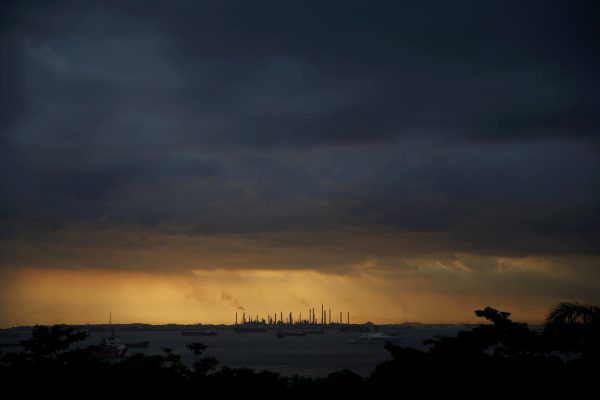As with past practice, the government has put in place measures to mitigate the external headwinds and restructure the economy to re-invigorate growth.
During the year, Singapore’s very open and trade-dependent economy was buffeted by the general global cyclical downturn. The sustained slump in oil prices severely impacted its rig building and oil-related industries. Demand from China has also slowed as Beijing restructures its own economy. Uncertainties in global financial markets resulting from Brexit and the US presidential election have also created new challenges.
While a growing number of developed and developing economies are turning protectionist, Singapore has to remain open. Past unilateral liberalisation has not ensured Singapore non-discriminatory market access in a global market fractured by preferential trade agreements and rising protectionism. Singapore has had to become an avid participant in preferential trade agreements.
Singapore is a member of the ASEAN Economic Community, launched at the end of 2015. It also signed up to the Trans-Pacific Partnership (TPP), which the newly elected US President has now scuppered. But the fallout for Singapore should be minimal since it already has trade agreements with all the TPP signatories except Canada and Mexico. The completion of the Regional Comprehensive Economic Partnership (RCEP), comprising the 10 ASEAN countries plus China, Japan, South Korea, India, Australia and New Zealand, is now a high priority.
Yet Singapore’s services hubs are still under threat. Its aviation hub and national carriers are facing intense competition from Middle Eastern airports and carriers as well as emerging competition from East and Southeast Asia. Singapore’s position as a regional entrepot, trans-shipment and logistics hub is similarly being eroded by emerging trade routes and physical infrastructure in Arctic, trans-Asia, and ASEAN countries.
At home, Singaporean businesses are burdened by the need to restructure in the face of the global cyclical downturn, high operating costs, policies restricting access to foreign labour and weak productivity performance. Exports have been declining, manufacturing is facing high costs as well as labour and land shortages, and innovative upscaling is not happening fast enough. The stock market faces poor corporate earnings performance and the property market remains tepid. Singapore’s Industry Transformation Programme provides fiscal incentives and support to small and medium enterprises to spur innovation and expand overseas, but these can only produce significant results in the long-term.
The cyclical downturn and economic restructuring is also negatively impacting the labour market, with significant retrenchments in offshore and marine oil and gas, electronics, banking, construction and real estate sectors. Professionals, managers, executives and technicians account for over half the workforce but face higher risks of retrenchment and difficulty in re-employment, difficulties aggravated by a skills mismatch.
Jobs available are mainly in the domestic-oriented sectors of information technology, healthcare, public infrastructure and education, where accelerated government expenditure is fueling some growth. The government has urged workers to equip themselves with the necessary skills through the SkillsFuture scheme to help mid-career workers pick up new skills to fill current vacancies as well as prepare for future jobs that emerge from ongoing technological disruptions.
A rapidly ageing population and workforce are also impacting on healthcare costs and the social safety net. Healthcare provision has increased with the Pioneer Generation Package and more public health facilities, but there is also a growing focus on active ageing and healthy living to contain healthcare costs and improve quality of life. The self-funded Central Provident Fund provides the basic social safety net for most Singaporeans. But it is inadequate to meet retirement needs for many low-income and self-employed households. This has led to various government schemes such as Workfare to top-up the earnings of the low-skilled.
Going into 2017, Singapore will continue to face a turbulent and uncertain external environment and tepid growth prospects. Amidst the economic gloom, the government is urging businesses and households to remain economically optimistic and socially cohesive. The government is likely to increase fiscal spending to tide over businesses and households, drawing on income earned from its sizeable reserves.
The government’s economic strategy is to prepare for the known and unknown challenges through innovation, enterprise and re-skilling as well as improving productivity performance. The Committee on the Future Economy (CFE) was established early in 2016 to identify key areas of growth as well as develop strategies to boost innovation, enterprise and appropriate skills-sets for Singapore’s future. The CFE recommendations are expected in early 2017.
Siow Yue Chia is a Senior Research Fellow at the Singapore Institute of International Affairs.
This article is part of an EAF special feature series on 2016 in review and the year ahead.

